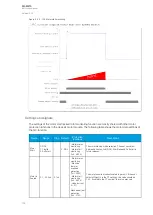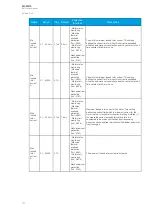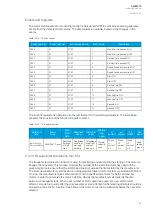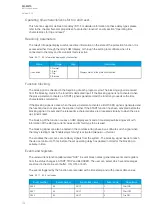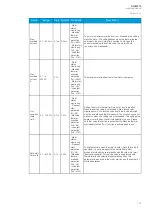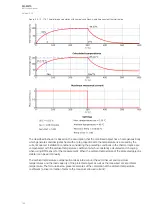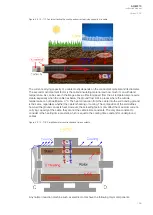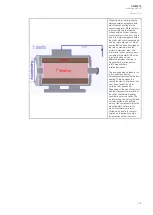
Operating time characteristics for trip and reset
This function supports definite time delay (DT). For detailed information on these delay types please
refer to the chapter "General properties of a protection function" and its section "Operating time
characteristics for trip and reset".
Read-only parameters
The relay's
Info page displays useful, real-time information on the state of the protection function. It is
accessed either through the relay's HMI display, or through the setting tool software when it is
connected to the relay and its Live Edit mode is active.
Table. 5.3.11 - 82. Information displayed by the function.
Name
Range
Step
Description
I< condition
0: Normal
1: Start
2: Trip
3: Blocked
-
Displays status of the protection function.
Function blocking
The block signal is checked in the beginning of each program cycle. The blocking signal is received
from the blocking matrix in the function's dedicated input. If the blocking signal is not activated when
the pick-up element activates, a START signal is generated and the function proceeds to the time
characteristics calculation.
If the blocking signal is active when the pick-up element activates, a BLOCKED signal is generated and
the function does not process the situation further. If the START function has been activated before the
blocking signal, it resets and the release time characteristics are processed similarly to when the pick-
up signal is reset.
The blocking of the function causes an HMI display event and a time-stamped blocking event with
information of the startup current values and its fault type to be issued.
The blocking signal can also be tested in the commissioning phase by a software switch signal when
the relay's testing mode "Enable stage forcing" is activated (
General
→
Device).
The variables the user can set are binary signals from the system. The blocking signal needs to reach
the device minimum of 5 ms before the set operating delay has passed in order for the blocking to
activate in time.
Events and registers
The undercurrent function (abbreviated "NUC" in event block names) generates events and registers
from the status changes in START, TRIP and BLOCKED. The user can select which event messages
are stored in the main event buffer: ON, OFF, or both.
The events triggered by the function are recorded with a time stamp and with process data values.
Table. 5.3.11 - 83. Event codes.
Event number
Event channel
Event block name
Event code
Description
3840
60
NUC1
0
Start ON
3841
60
NUC1
1
Start OFF
3842
60
NUC1
2
Trip ON
A
AQ
Q-M210
-M210
Instruction manual
Version: 2.04
153

